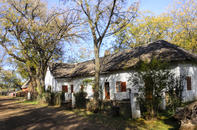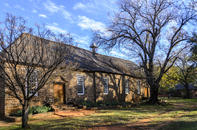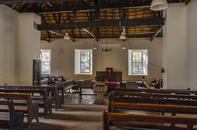The Eye
The history of Kuruman is a fascinating one. Apparently, the name of the town is derived from the Chief who lived in the area, named Kudumane. In 1826, Robert Moffat, a worker of the London Missionary Society at the time, established the Moffat Church near the spring known as 'The Eye' of Kuruman.
This mission station went on to become the most famous in Africa, becoming the venue for the marriage of Moffat's daughter and the son of the world famous explorer David Livingstone.
The strong spring surfacing at Kuruman has attracted people for thousands of years. The early Tswana inhabitants named it Gasegonyane, or 'little water calabash'. With a daily flow of 20-30 million litres of water, Die Oog (The Eye) - as it is known locally - is the biggest natural spring in the southern hemisphere.
Kuruman is a bustling town, which boasts as the largest cattle ranching and dairy farming district in the country. The town has made a name for itself as one of the major hunting areas in South Africa. Kuruman is also known to mine asbestos, manganese, lime and iron.


